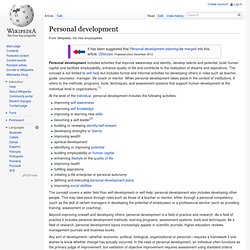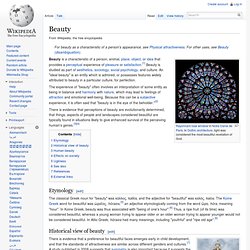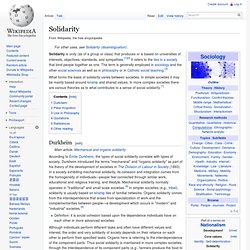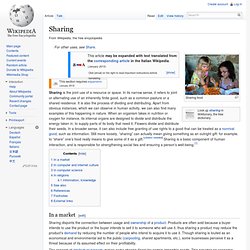

Sense of relationships. For infants and toddlers, the "set-goal" of the attachment behavioural system is to maintain or achieve proximity to attachment figures, usually the parents.

Attachment theory is a psychological model that attempts to describe the dynamics of long-term interpersonal relationships between humans. However, ‘attachment theory is not formulated as a general theory of relationships. It addresses only a specific facet’ (Waters et al. 2005: 81): how human beings respond within relationships when hurt, separated from loved ones, or perceiving a threat.[1] In infants, attachment as a motivational and behavioral system directs the child to seek proximity with a familiar caregiver when they are alarmed, with the expectation that they will receive protection and emotional support. Attachments between infants and caregivers form even if this caregiver is not sensitive and responsive in social interactions with them.[5] This has important implications. Infant attachment[edit] Behaviors[edit] Consensus decision-making. Members of the Shimer College Assembly reaching a consensus through deliberation.

Consensus decision-making is a group decision-making process that seeks the consent of all participants. Consensus may be defined professionally as an acceptable resolution, one that can be supported, even if not the "favourite" of each individual. Sense of community. In his seminal 1974 book, psychologist Seymour B. Sarason proposed that psychological sense of community become the conceptual center for the psychology of community, asserting that it "is one of the major bases for self-definition. " By 1986 it was regarded as a central overarching concept for community psychology (Sarason, 1986; Chavis & Pretty, 1999). Among theories of sense of community proposed by psychologists, McMillan & Chavis's (1986) is by far the most influential, and is the starting point for most of the recent research in the field.
It is discussed in detail below. Definitions[edit] Belongingness. Belonging is a strong and inevitable feeling that exists in human nature. To belong or not to belong can occur due to choices of one's self, or the choices of others. Not everyone has the same life and interests, hence not everyone belongs to the same thing or person. Without belonging, one cannot identify themselves as clearly, thus having difficulties communicating with and relating to their surroundings.[1] Roy Baumeister and Mark Leary argue that belongingness is such a fundamental human motivation that we feel severe consequences of not belonging.
If it wasn’t so fundamental, then lack of belonging wouldn’t have such dire consequences on us. Psychological needs[edit] Abraham Maslow suggested that the need to belong was a major source of human motivation. Other theories have also focused on the need to belong as a fundamental psychological motivation. Personal development. Personal development includes activities that improve awareness and identity, develop talents and potential, build human capital and facilitate employability, enhance quality of life and contribute to the realization of dreams and aspirations.

The concept is not limited to self-help but includes formal and informal activities for developing others in roles such as teacher, guide, counselor, manager, life coach or mentor. When personal development takes place in the context of institutions, it refers to the methods, programs, tools, techniques, and assessment systems that support human development at the individual level in organizations.[1] At the level of the individual, personal development includes the following activities: The concept covers a wider field than self-development or self-help: personal development also includes developing other people. Beauty. The experience of "beauty" often involves an interpretation of some entity as being in balance and harmony with nature, which may lead to feelings of attraction and emotional well-being.

Because this can be a subjective experience, it is often said that "beauty is in the eye of the beholder. Play (activity) Voluntary, intrinsically motivated recreation Many prominent researchers in the field of psychology, including Melanie Klein, Jean Piaget, William James, Sigmund Freud, Carl Jung and Lev Vygotsky have erroneously viewed play as confined to the human species, believing play was important for human development and using different research methods to prove their theories.

"Summing up the formal characteristic of play, we might call it a free activity standing quite consciously outside 'ordinary' life as being 'not serious' but at the same time absorbing the player intensely and utterly. It is an activity connected with no material interest, and no profit can be gained by it. It proceeds within its own proper boundaries of time and space according to fixed rules and in an orderly manner. It promotes the formation of social groupings that tend to surround themselves with secrecy and to stress the difference from the common world by disguise or other means. " Children playing in a sandbox. Commoning. = the act of creating, constructing and maintaining a commons "A verb to describe the social practices used by commoners in the course of managing shared resources and reclaiming the commons.
Popularized by historian Peter Linebaugh. " [1] Massimo De Angelis: Group cohesiveness. When discussing social groups, a group is said to be in a state of cohesion when its members possess bonds linking them to one another and to the group as a whole.

Although cohesion is a multi-faceted process, it can be broken down into four main components: social relations, task relations, perceived unity, and emotions.[1] Members of strongly cohesive groups are more inclined to participate readily and to stay with the group.[2] Definition[edit] There are different ways to define group cohesion, depending on how researchers conceptualize this concept.
However, most researchers define cohesion to be task commitment and interpersonal attraction to the group.[3][4] Causes[edit] The bonds that link group members to one another and to their group as a whole are not believed to develop spontaneously. Solidarity. Solidarity is unity (as of a group or class) that produces or is based on universities of interests, objectives, standards, and sympathies.[1][2] It refers to the ties in a society that bind people together as one.

The term is generally employed in sociology and the other social sciences as well as in philosophy or in Catholic social teaching.[3] What forms the basis of solidarity varies between societies. In simple societies it may be mainly based around kinship and shared values. In more complex societies there are various theories as to what contributes to a sense of social solidarity.[1] Durkheim[edit] According to Émile Durkheim, the types of social solidarity correlate with types of society. Definition: it is social cohesion based upon the dependence individuals have on each other in more advanced societies. Peter Kropotkin[edit] Equity (economics) Equity or economic equality is the concept or idea of fairness in economics, particularly in regard to taxation or welfare economics.

More specifically, it may refer to equal life chances regardless of identity, to provide all citizens with a basic and equal minimum of income, goods, and services or to increase funds and commitment for redistribution.[1] Inequality and inequities have significantly increased in recent decades, possibly driven by the worldwide economic processes of globalisation, economic liberalisation and integration.[2] This has led to states ‘lagging behind’ on headline goals such as the Millennium Development Goals (MDGs) and different levels of inequity between states have been argued to have played a role in the impact of the global economic crisis of 2008–2009.[2] The state often plays a central role in the necessary redistribution required for equity between all citizens, but applying this in practise is highly complex and involves contentious choices. Generosity. In times of natural disaster, relief efforts are frequently provided, voluntarily, by individuals or groups acting unilaterally in making gifts of time, resources, goods, money, etc.

Generosity can also be spending time, money, or labor for others without being rewarded in return. Although the term generosity often goes hand-in-hand with charity, many people in the public's eye want recognition for their good deeds. Donations are needed to support organizations and committees, however, generosity should not be limited to times of great need such as natural disasters and extreme situations. Generosity is not solely based on one's economic status, but instead, includes the individual's pure intentions of looking out for society's common good and giving from the heart. Generosity should reflect the individual's passion to help others.
Sharing. Sharing food Sharing is the joint use of a resource or space.

In its narrow sense, it refers to joint or alternating use of an inherently finite good, such as a common pasture or a shared residence. Mindfulness. Mindfulness (Pali: sati,[1] Sanskrit: smṛti; also translated as awareness) is a spiritual or psychological faculty (indriya) that, according to the teaching of the Buddha, is of great importance in the path of enlightenment. It is one of the seven factors of enlightenment. "Correct" or "right" mindfulness (Pali: sammā-sati, Sanskrit samyak-smṛti) is the seventh element of the noble eightfold path.
The Buddha advocated that one should establish mindfulness (satipaṭṭhāna) in one's day-to-day life, maintaining as much as possible a calm awareness of one's body, feelings, mind, and dharmas. Love. For information about showing love on Wikipedia, see WP:LOVE and WP:♥. Love in its various forms acts as a major facilitator of interpersonal relationships and, owing to its central psychological importance, is one of the most common themes in the creative arts.[8] Love may be understood as a function to keep human beings together against menaces and to facilitate the continuation of the species.[9] Definitions The word "love" can have a variety of related but distinct meanings in different contexts. Many other languages use multiple words to express some of the different concepts that in English are denoted as "love"; one example is the plurality of Greek words for "love" which includes agape and eros.[10] Cultural differences in conceptualizing love thus doubly impede the establishment of a universal definition.[11]
Empathy. Empathy is the capacity to understand what another person is experiencing from within the other person's frame of reference, i.e., the capacity to place oneself in another's shoes.[1] Etymology[edit] The English word is derived from the Ancient Greek word ἐμπάθεια (empatheia), "physical affection, passion, partiality" which comes from ἐν (en), "in, at" and πάθος (pathos), "passion" or "suffering".[2] The term was adapted by Hermann Lotze and Robert Vischer to create the German word Einfühlung ("feeling into"), which was translated by Edward B. Titchener into the English term empathy.[3][4] Trust (social sciences) In a social context, trust has several connotations.[1] Definitions of trust[2][3] typically refer to a situation characterised by the following aspects: One party (trustor) is willing to rely on the actions of another party (trustee); the situation is directed to the future.